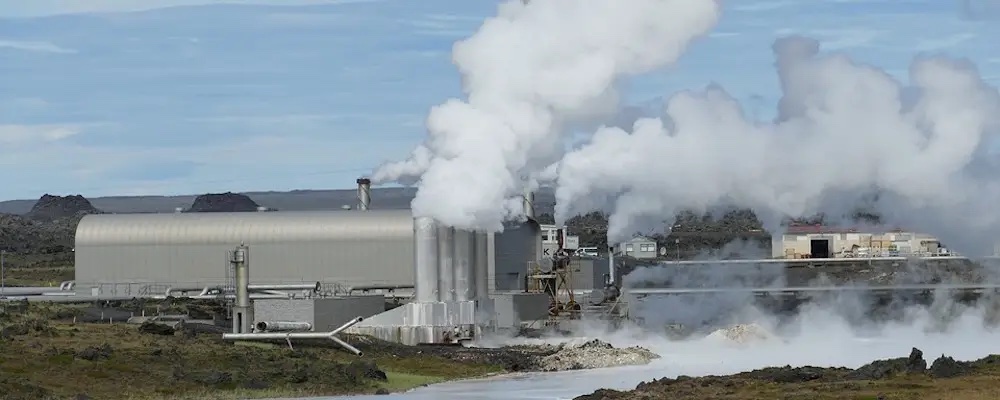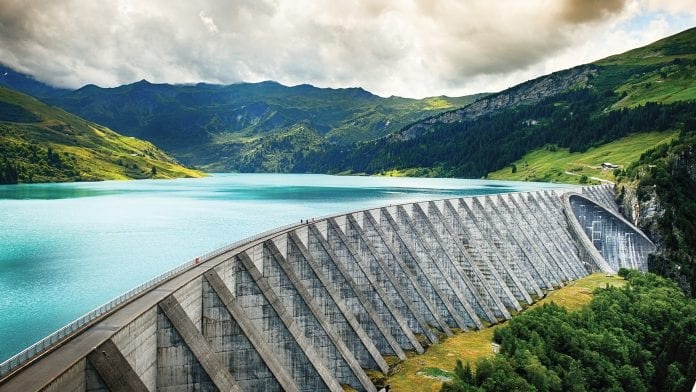Updated 26 minutes ago
What are renewable resources?
Written by
Ana Almerini
The term ‘renewable resources’ describes energy sources that naturally replenish themselves within a human lifetime.
Solar, wind, geothermal, and hydropower are some examples of renewable energy resources. Utilizing renewable energy is vital to our society as we switch to a less fossil fuel-dependent world to fight climate change.
Below, we’ll discuss the different types of renewable resources, their benefits, and more.
Key takeaways
-
Renewable resources are naturally replenishing and won’t run out within a human lifetime.
-
Common renewable resources include solar, wind, geothermal, hydropower, and bioenergy.
-
Non-renewable resources like fossil fuels are still the most dominant energy sources, but building and running renewable energy plants is becoming cheaper.
-
Many renewable energy sources are also clean energy sources, meaning they do not produce heat-trapping greenhouse gases like fossil fuels.
What are renewable resources?
The Natural Resources Defence Council (NRDC) defines renewable resources as energy that comes from natural sources or processes that are constantly replenished. For example, when the wind blows to power wind turbines – it doesn’t make it any less windy.
Renewable resources such as the sun, wind, and water can be harnessed to generate electricity, heat and cool spaces and water, and even used in transportation. Renewable energy usage is expanding year after year as the world continues to realize its potential in combating global warming.
One of the best-known examples of using a renewable source is using solar power to create electricity to power homes with rooftop solar panels. Using the sun’s energy to power your home doesn’t weaken the sun.
Top 5 examples of renewable resources
Examples of renewable energy resources include:
Solar energy
Wind energy
Geothermal energy
Hydropower
Bioenergy
Of all renewable resources, solar and large-scale wind farms are probably the most well-known. Solar energy is the most practical for home use – but is also seen in large-scale commercial and utility projects worldwide.
It is important to note that each kind of renewable energy source has its own unique set of challenges. Let’s take a closer look at each type and what it offers.
Solar energy

Solar power is considered a renewable source because the sun doesn’t get weaker when we use its light. Solar panels can collect solar energy and turn it into electricity that can power homes and businesses. There are also solar thermal devices that use the sun’s heat to create energy and heat water.
Going solar is the most practical renewable energy option for homeowners. By installing solar panels on your home, you can generate your own electricity instead of having to rely on buying electricity from the grid, which can lead to lower electricity bills.
Solar energy has a few pros and cons. Despite its ability to save money and being a clean, renewable source, solar panel manufacturing negatively impacts the environment. Also, solar panels are an intermittent energy source.
Pros
-
Reduces your electricity bill
-
Diverse uses
-
Great financial investment
Cons
-
High upfront cost
-
Manufacturing has some environmental impact
-
Intermittent energy source
Wind energy

Wind power is another well-known renewable energy source. There are several different ways to harness wind power, but the most popular method is using wind turbines.
As the wind blows, these turbines spin to power a generator. Wind turbine farms can be seen in vast areas worldwide and accounts for 10% of the total renewable energy generation in the U.S.
Wind farms are a great way to utilize clean energy, but they require carefully planning and specific conditions for peak operation. When used well, wind energy can be a renewable, low-cost, and space-efficient energy source that promotes job growth.
Here are some examples of the advantages and disadvantages of wind energy:
Pros
-
Space efficient
-
Cheap energy
-
Promotes job growth
Cons
-
Limited locations
-
Can be a threat to wildlife
-
Large and bulky
Geothermal energy

Geothermal energy is the most untapped renewable resource. Geothermal power plants harness underground heat to operate electricity-generating steam turbines.
Geothermal power systems are primarily used for heating and cooling. They’re a reliable and sustainable source of energy—and just another way we can reduce carbon emissions as a society.
The thing is, geothermal energy isn’t always as practical than other renewables. It is incredibly location-specific, with geothermal reservoirs hard to come by in the U.S. It is also quite expensive, with commercial projects costing millions.
We’ve outlined some of the top geothermal pros and cons below:
Pros
-
Has massive potential
-
Reliable source
-
Great for heating and cooling
Cons
-
Location-specific
-
High initial costs
-
Sustainability relies on reservoirs being properly managed
Hydropower

Hydropower utilizes the force of water to generate electricity, usually in large-scale applications with big bodies of water, reservoirs, and dams.
Hydropower plants create energy by using water’s force to turn turbines. In a dam like the one pictured above, water is released from the reservoir when electricity is needed to propel these turbines. Generating power this way is reliable and produces no harmful emissions.
This source is also location-specific – since you need a large body of water to take advantage of it. The Hoover Dam in Nevada is an excellent example of a hydroelectric plant.
Tidal energy and wave energy are less common forms of hydropower that use ocean waves and currents to generate electricity.
The table below outlines the biggest benefits and drawbacks of hydropower:
Pros
-
Low carbon emissions
-
Reliable
-
Safe
Cons
-
Expensive to build
-
Limited locations
-
Has environmental consequences on surrounding habitat
Bioenergy
Last but not least, we have bioenergy. Bioenergy, also known as biomass, is essentially a blanket term for any energy sources that are derived from plant material. Electricity can be generated by burning organic matter. A common example of this would be using corn to create ethanol, a type of biofuel.
Another common example of bioenergy is wood pellets, which are made from trees and burned in power plants to move turbines. Biomasses are renewable energy sources because plants can be replanted and grown year after year.
Bioenergy has the potential to be unsustainable, as it uses more resources than what’s being grown, and burning biomass can release particulate matter.
Pros
-
Reduces food and plant waste
-
Carbon-neutral source
-
Reliable
Cons
-
Bioenergy plants are expensive and require a lot of space
-
Burning biomass releases emissions and particulate matter
-
Inefficient
Pros and cons of renewable resources
While renewable resources have many benefits, there are a few drawbacks to consider.
Pros
-
Low-emission energy sources
-
Low energy costs
-
Increaesed energy independence
-
Energy access for remote communities
Cons
-
Often intermittent resources
-
Specific geographic requirements
-
Can have impact on surrounding habitat and environment
Advantages of renewable energy
Low to no emissions: Many renewable energy resources are also clean energy sources, meaning they don't release harmful emissions like carbon dioxide into the atmosphere.
Lower energy costs: Renewable energy costs less to generate since they are derived from sources that never run out and can be replenished.
Increases energy independence in the U.S.: Renewables typically use local resources, allowing us to reduce our reliance on foreign oil and gas to run our electric grid.
Energy access for remote communities: In areas where the power grid is not available, renewable resources can give these communities access to electricity.
Disadvantages of renewable energy
Often intermittent resources: Some renewable energy resources require certain conditions to operate, which isn't ideal when you need to have power on demand. For example, solar panels can't generate electricity at night, so backup storage or an alternative energy source would be needed for continuous supply.
Specific geographical requirements: Many renewable energy sources require specific locations to harness them. Hydropower requires being near a large water source and building a dam and reservoir, which isn't always possible.
Other environmental impacts: Although solar, hydro, and wind power are emission-free while operating, manufacturing solar panels, wind turbines, and building facilities for these sources can impact the surrounding environment through mining or emissions. Also, installation sites and power plant buildings can be harmful to the surrounding environment.
Renewable energy in the United States
Slowly but surely, the U.S. is starting to adopt more renewable energy sources – this can partially be due to their decreasing costs.
So, where does the use of renewable energy stand in the U.S. today?
According to data from the U.S. Energy Information Administration (EIA), all renewable resources account for 21.4% of all electricity generated in the U.S.. Wind power leads the way for electricity generation, making up 10.2% of generation from a renewable source. The use of renewables for electricity generation has slowly crept up in recent years, jumping up nearly 10% in the last decade.
Fossil fuels make up about 60% of the country’s electricity generation – with over 40% of that being from natural gas. Currently, the use of renewables is surpassing coal and nuclear power.
The future of renewable energy
Even though the world hasn’t quite perfected the use of renewable energy, improvements are made every year. Renewables are the best option for reducing humanity's carbon footprint and lowering our overall environmental impact.
The good news is that the future looks bright for the use of renewable energy sources. The cost of renewable energy is decreasing. Plenty of states have pushed legislation in their Renewable Portfolio Standards (RPS), which require utilities to generate a certain percentage of electricity from renewable sources by law.
States like California, Hawaii, and Washington have a target of having utilities generate 100% renewable energy by 2045.
Some states prioritize renewables more than others. The final push will be to get all 50 states on board. That way, we might see more developments in and use of renewable energy technology.
Ana is the Marketing & Communications Manager at SolarReviews, working within the solar industry since 2020. With a Master's in Climate and Society and professional experience in marketing, she helps communicate the value of solar to homeowners and build awareness of the SolarReviews brand. On weekends you can find her at the Jersey shore, reading a book from the ever-increasing stack on her side table, or eating food someone else cooked....
Learn more about Ana Almerini